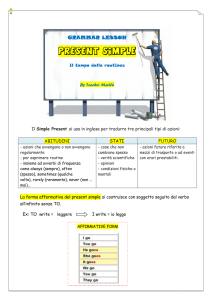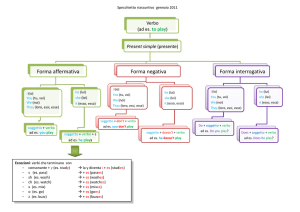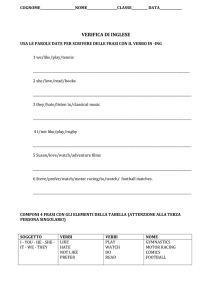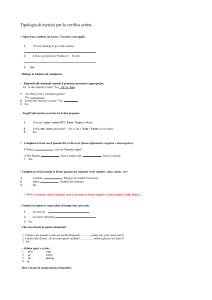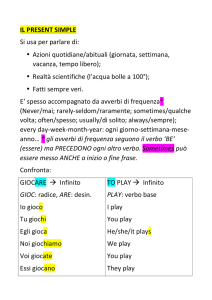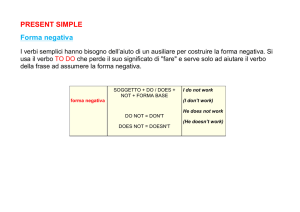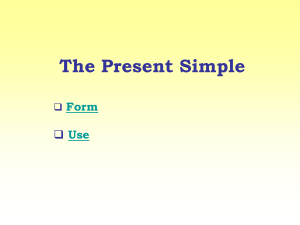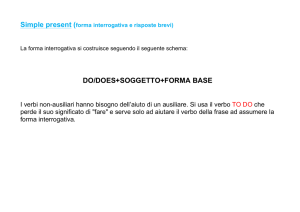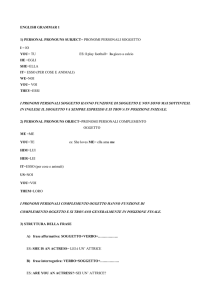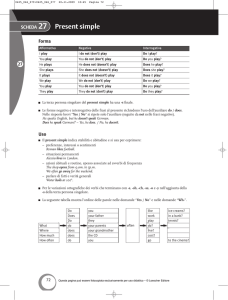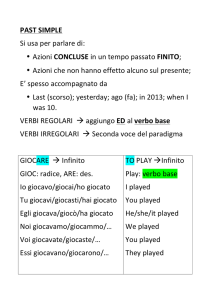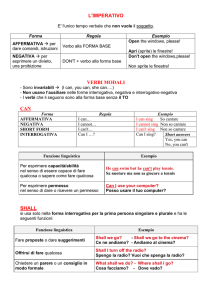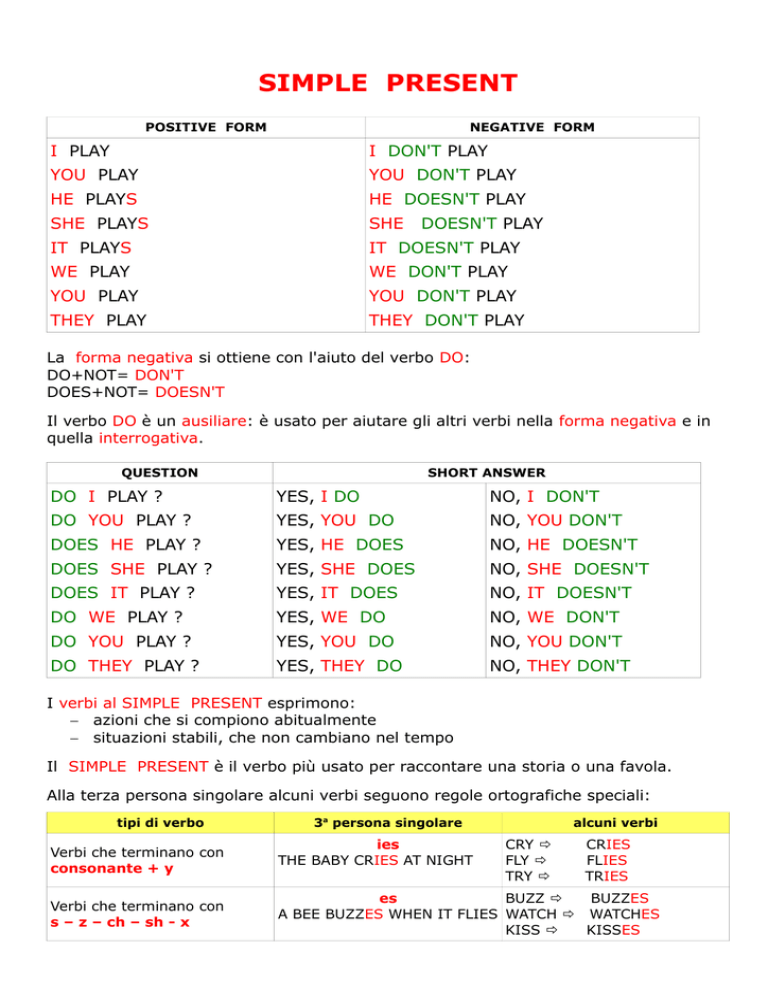
SIMPLE PRESENT
POSITIVE FORM
NEGATIVE FORM
I PLAY
I DON'T PLAY
YOU PLAY
YOU DON'T PLAY
HE PLAYS
HE DOESN'T PLAY
SHE PLAYS
SHE
IT PLAYS
IT DOESN'T PLAY
WE PLAY
WE DON'T PLAY
YOU PLAY
YOU DON'T PLAY
THEY PLAY
THEY DON'T PLAY
DOESN'T PLAY
La forma negativa si ottiene con l'aiuto del verbo DO:
DO+NOT= DON'T
DOES+NOT= DOESN'T
Il verbo DO è un ausiliare: è usato per aiutare gli altri verbi nella forma negativa e in
quella interrogativa.
QUESTION
SHORT ANSWER
DO I PLAY ?
YES, I DO
NO, I DON'T
DO YOU PLAY ?
YES, YOU DO
NO, YOU DON'T
DOES HE PLAY ?
YES, HE DOES
NO, HE DOESN'T
DOES SHE PLAY ?
YES, SHE DOES
NO, SHE DOESN'T
DOES IT PLAY ?
YES, IT DOES
NO, IT DOESN'T
DO WE PLAY ?
YES, WE DO
NO, WE DON'T
DO YOU PLAY ?
YES, YOU DO
NO, YOU DON'T
DO THEY PLAY ?
YES, THEY DO
NO, THEY DON'T
I verbi al SIMPLE PRESENT esprimono:
− azioni che si compiono abitualmente
− situazioni stabili, che non cambiano nel tempo
Il SIMPLE PRESENT è il verbo più usato per raccontare una storia o una favola.
Alla terza persona singolare alcuni verbi seguono regole ortografiche speciali:
tipi di verbo
Verbi che terminano con
consonante + y
Verbi che terminano con
s – z – ch – sh - x
3a persona singolare
ies
THE BABY CRIES AT NIGHT
alcuni verbi
CRY
FLY
TRY
CRIES
FLIES
TRIES
es
BUZZ
BUZZES
A BEE BUZZES WHEN IT FLIES WATCH WATCHES
KISS
KISSES

